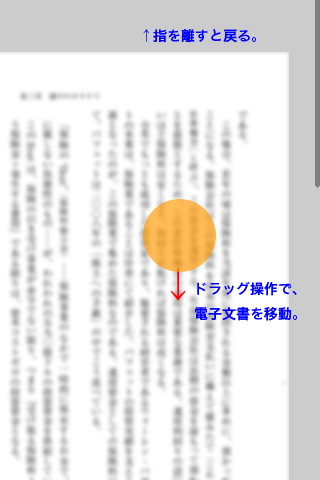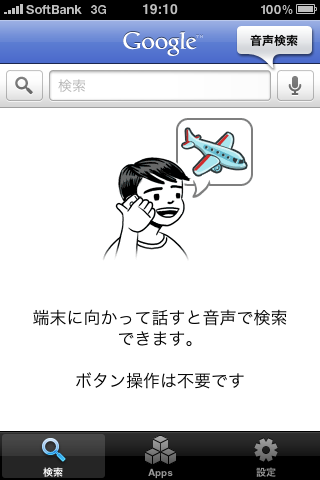Appleの強力な特許群はAndroid端末/電子書籍端末の脅威になるかも知れない
米Appleは2010年3月2日、台湾のHTCを特許侵害で提訴したと発表した(Apple Sues HTC for Patent Infringement)。HTCはAndroid端末の最大の供給元でありNexus Oneの開発でも知られている。HTCとしては、まったく事前通告のない突然の提訴だったようだ。
Appleは20件の特許侵害を主張しているが、内10件の特許番号が訴状で明らかにされている。請求項を確認してみたところ、その基本的で広い権利範囲に驚愕してしまった。通常、特許と言っても、概要は広くても実際に請求項を見てみれば、様々な制限がかかっていて全然怖くない事が多いのだが、挙げられた特許はどれも請求項が比較的シンプルか、ごく当たり前の構成が羅列されているだけであり、極めて強力であると考えられる。事はHTCのAndroid端末だけに限らず、SonyEricssonやSamsung等他のAndroid端末メーカーにも影響する話だ。また、各社の参入が噂される電子ブック端末においても脅威となるだろう。
以下に代表的な特許の請求項1およびその参考訳を紹介する。請求項しか読んでおらず解釈には誤りが含まれる可能性がある。もし誤りに気付いた人がいればご指摘いただきたい。また、仮に先行技術の存在を示す事ができれば、特許を無効にする事も可能である。Appleの出願以前に同様の技術が利用されていた事に気付いた人は何らかの形で発表してもらいたい。
| 【告知】@LunarModule7でつぶやいています。 興味のあるかたはフォローください。 |
United States Patent: 7362331 Time-based, non-constant translation of user interface objects between states
1. A method for moving an object in a graphical user interface, comprising the steps of: a) determining a path of movement for the object along at least one axis, and a period of time for the movement along said path; b) establishing a non-constant velocity function along said axis for said period of time; c) calculating an instantaneous position for the object along said path in accordance with said function and the relationship of a current time value to said period of time; d) displaying said object at said calculated position; and e) iteratively repeating steps (c) and (d) during said period of time.
【請求項1】GUIにおけるオブジェクト移動方法であって、次のステップから構成される方法。
- a) 少なくとも1軸に沿ったオブジェクトの移動パスと、前記パスに従って移動する時間を決定するステップ、
- b) 前記パスに沿って、前記移動時間、速度を変化させる速度関数を確立するステップ、
- c) 前記速度関数と現在時刻と移動時間との関係に従って移動パス上のオブジェクトの瞬間的な位置を計算するステップ、
- d) 前記計算された位置にオブジェクトを表示するステップ
- e) 前記移動時間中、ステップcからdを繰り返すステップ
オブジェクトを「一定速度ではなく」速度を変化させながら移動させようとすると、何もかもこの特許の権利範囲に抵触する可能性が高い。iPhoneなどで、オブジェクトをドラッグして動かす時に、加速度がついて速さが変化したり、ぴったり止まらず少し震えるような効果があるが、そのような効果を実現すると本特許に抵触してしまう。速度関数を作らずに同様の効果が得られれば良いのかも知れない。
なお、1999年12月3日にW3C Working Draft: Scalable Vector Graphics (SVG) 1.0が公開されており、animateMotion要素を用いて、速度を変えつつオブジェクトを動作させる記述が規定されている。SVGのアニメーション規定はSMIL Animationを流用したもので、こちらはWorking Draftが1999年10月29日に公開されている。この先行技術は本特許(2001年1月5日出願)の無効化理由になりうると考えられる。
本特許は請求項1の他に5,8,11,14,17,19,24が独立請求項となっている。請求項5はウィンドウが速度を変えながら最小化する動作、請求項8はオブジェクトを消したとき、他のオブジェクトが空きスペースを埋めるとき速度を変えつつ動く動作、請求項11は同じく挿入時に他のオブジェクトがずれるとき速度を変えつつ動く動作、後は媒体クレームである。特許無効審判を起こす場合には、これらの独立請求項についても争う必要があるだろう。
United States Patent: 7479949 Touch screen device, method, and graphical user interface for determining commands by applying heuristics
1. A computing device, comprising: a touch screen display; one or more processors; memory; and one or more programs, wherein the one or more programs are stored in the memory and configured to be executed by the one or more processors, the one or more programs including: instructions for detecting one or more finger contacts with the touch screen display; instructions for applying one or more heuristics to the one or more finger contacts to determine a command for the device; and instructions for processing the command; wherein the one or more heuristics comprise: a vertical screen scrolling heuristic for determining that the one or more finger contacts correspond to a one-dimensional vertical screen scrolling command rather than a two-dimensional screen translation command based on an angle of initial movement of a finger contact with respect to the touch screen display; a two-dimensional screen translation heuristic for determining that the one or more finger contacts correspond to the two-dimensional screen translation command rather than the one-dimensional vertical screen scrolling command based on the angle of initial movement of the finger contact with respect to the touch screen display; and a next item heuristic for determining that the one or more finger contacts correspond to a command to transition from displaying a respective item in a set of items to displaying a next item in the set of items.
【請求項1】電子計算機であって、タッチスクリーンディスプレイと、1つか複数のプロセッサとメモリと、1つか複数のプログラムを有し、
前記1つか複数のプログラムは前記メモリに格納され、前記1つか複数のプロセッサで実行されるよう構成され、
前記1つか複数のプログラムは次を含み、
- タッチスクリーンへの1本か複数の指の接触を検出する命令、
- その1本か複数の指の接触に1つか複数のヒューリスティックを割り当て、デバイスへのコマンドを決定する命令、
- そして決定されたコマンドを実行する命令
前記1つか複数のヒューリスティックは次を含む。
マルチタッチ操作に関する特許で、垂直スクロールと他の移動操作を指の動かす角度に従って区別し、さらには、次の画像とか次の動画とかに遷移するようなタッチ操作を有していると抵触する可能性がある。電子書籍のページ操作(垂直スクロール、移動、ページ送り)などの操作は該当しそうだ。
United States Patent: 7657849 Unlocking a device by performing gestures on an unlock image
1. A method of controlling an electronic device with a touch-sensitive display, comprising: detecting contact with the touch-sensitive display while the device is in a user-interface lock state; moving an unlock image along a predefined displayed path on the touch-sensitive display in accordance with the contact, wherein the unlock image is a graphical, interactive user-interface object with which a user interacts in order to unlock the device; transitioning the device to a user-interface unlock state if the detected contact corresponds to a predefined gesture; and maintaining the device in the user-interface lock state if the detected contact does not correspond to the predefined gesture.
【請求項1】タッチスクリーンを有する電子デバイスを制御する方法であって、
- デバイスがロック状態にある時にタッチスクリーンへの接触を検出し、
- その接触にしたがって、タッチスクリーンに予め定められた表示パスに従ってアンロック画像を移動させ、
- そのアンロック画像は、グラフィカルでインタラクティブなUIオブジェクトであって、デバイスをアンロックするため利用され、
- 検出された接触が予め定められたジェスチャに一致した場合には、デバイスをアンロック状態に遷移させ、
- もし検出された接触が予め定められたジェスチャに一致しない場合には、デバイスをロック状態のまま保つ、
ことを特徴とする方法。
iPhoneのアンロック画面で、指をスライドさせてロック解除するUIがほぼそのまま権利化されている。今まで出たタッチスクリーン端末はほとんど抵触しているのではないだろうか。スライド式UIを使わずにロックを解除する方法を編み出す必要があるだろう。
[
 0]
0]United States Patent: 7469381 List scrolling and document translation, scaling, and rotation on a touch-screen display
1. A computer-implemented method, comprising: at a device with a touch screen display: displaying a first portion of an electronic document; detecting a movement of an object on or near the touch screen display; in response to detecting the movement, translating the electronic document displayed on the touch screen display in a first direction to display a second portion of the electronic document, wherein the second portion is different from the first portion; in response to an edge of the electronic document being reached while translating the electronic document in the first direction while the object is still detected on or near the touch screen display: displaying an area beyond the edge of the document, and displaying a third portion of the electronic document, wherein the third portion is smaller than the first portion; and in response to detecting that the object is no longer on or near the touch screen display, translating the electronic document in a second direction until the area beyond the edge of the electronic document is no longer displayed to display a fourth portion of the electronic document, wherein the fourth portion is different from the first portion.
【請求項1】コンピュータに実装された方法であって、
タッチスクリーンを備えたデバイスにおいて、
- 電子文書の第1の部分を表示し、
- タッチスクリーン上か近傍のオブジェクトの移動を検出し、
- 検出された移動に伴い、電子文書の第1の部分とは異なる第2の部分を表示するために、タッチスクリーン上の電子文書を第1の方向に平行移動させ、
- 第1の方向に移動している最中に電子文書の端に到達した場合に、オブジェクトがまだタッチスクリーン上か近傍に検出されている場合に、電子文書の端より先の部分と第1の部分よりも小さな電子文書の第3の部分を表示し、
- オブジェクトがタッチスクリーン上か近傍に検出されなくなった場合に、電子文書の端より先の部分が見えなくなるまで移動し、第1の部分とは異なる第4の部分が表示されるように第2の方向に平行移動させる、
ことを特徴とする方法。
タッチスクリーン上でドキュメントを表示させ、スクロール中に文書端まで移動してしまった際に文書の外の領域が表示され、指を離すと元に戻るようなUIが権利化されている。電子書籍端末においても抵触の可能性があるだろう。

United States Patent: 5920726 System and method for managing power conditions within a digital camera device
1. A system for managing power conditions in a digital camera device, comprising:
a processor coupled to said digital camera device for controlling said digital camera device; and
a power manager coupled to said processor, said power manager including registers for containing status information, interrupt information, and control information;
said power manager providing said status information, said interrupt information, and said control information to said processor for controlling said digital camera device.【請求項1】デジタルカメラデバイスの電源状態を管理するシステムであって、
前記デジタルカメラデバイスに結合され、前記デジタルカメラデバイスを制御するためのプロセッサと、
前記プロセッサに結合され、ステータス情報とインタラプト情報と制御情報を格納する為のレジスタを含むパワーマネージャーから構成され、
前記パワーマネージャーは、前記デジタルカメラデバイスを制御するために前記プロセッサに前記ステータス情報と前記インタラプト情報と前記制御情報を供給することを特徴とするシステム。
シンプルすぎてどこが特徴なのか分かり難い特許だが、電源管理が可能なカメラモジュールがクレームされている。カメラモジュールから渡される情報が、ステータス、割り込み、制御情報と解釈可能な場合には抵触の可能性がある。
United States Patent: 7633076 Automated response to and sensing of user activity in portable devices
1. A portable data processing device comprising: a display; an input device; a proximity sensor; at least one processor coupled to the input device and to the display and coupled to the proximity sensor to receive data from the proximity sensor; a radio frequency (RF) transceiver coupled to the processor; a speaker coupled to the RF transceiver; a microphone coupled to the RF transceiver; a storage device coupled to the at least one processor; an ambient light sensor (ALS) coupled to the at least one processor, wherein the at least one processor is configured to change the power setting of the display based upon data from the ALS; wherein the processor is configured to determine, based upon at least the data from the proximity sensor, whether to change a state of processing of data from the input device relative to receipt of user inputs; wherein the input device comprises a multi-touch input panel which is integrated with the display and which is capable of determining multiple, separate concurrent touches on the multi-touch input panel and wherein the multi-touch input panel provides touch data derived from one or more touches to the multi-touch input panel and wherein when the data from the proximity sensor determines a first proximity state, the touch data is processed as an intentional user input and when the data from the proximity sensor determines a second proximity state, the touch data is either not processed as an intentional user input or is not provided by the multi-touch input panel; wherein the second proximity state occurs when the portable data processing device is proximate to the user's ear; wherein the storage device is configured to store media for playback on the portable data processing device, and wherein the data from the proximity sensor represents at least one of a distance and a rate of change of distance; and wherein the at least one processor is configured to change the state of processing of the touch data from the multi-touch input panel in response to a change in the data from the proximity sensor.
【請求項1】ポータブルデータ処理装置であって、
- ディスプレイと
- 入力デバイスと
- 近接センサと
- 入力デバイスとディスプレイと結合され、近接センサからデータを受信するために近接センサと結合された少なくとも一つのプロセッサと
- プロセッサに結合されたRF送受信機と
- RF送受信機と結合されたスピーカーと
- RF送受信機と結合されたマイクロフォンと
- 少なくとも1つのプロセッサと結合されたストレージデバイスと
- 少なくとも1つのプロセッサと結合された環境光センサ(ALS)であって、少なくとも1つのプロセッサがALSからのデータに基づきディスプレイのパワー設定を構成し、
- プロセッサは、少なくとも近接センサからのデータに基づき、ユーザ入力の受理に対応する入力デバイスからのデータ処理の状態を変更するかどうか決定を行うよう構成され、
- 入力デバイスは、ディスプレイに統合され、複数の分散した同時タッチ検出に対応したマルチタッチインプットパネルから構成され、マルチタッチインプットパネルはパネルへの1つないし複数のタッチにより生成された接触データを提供し、近接センサのデータが第1の近接状態にある時は、接触データを意図的なユーザ入力として処理し、近接センサのデータが第2の近接状態にある時には、接触データは意図的なユーザ入力として処理されないか、マルチタッチインプットパネルからデータ自体が供給されず、
- ここで第2の近接状態は、ポータブルデータ処理装置がユーザの耳に近接する時に発生し、
- ストレージデバイスはポータブルデータ処理装置において再生するためにメディアを格納するよう構成され、近接センサからのデータは少なくとも距離か距離の変化レートのどちらかを表し、
- 少なくとも1つのプロセッサは近接センサからのデータの変化に伴い、マルチタッチインプットパネルからの接触データ処理の状態を変更するよう構成された
ことを特徴とする情報処理装置。
特許のコンセプトとしては、近接センサによってユーザが耳にあてているのかそうでないのかを判断し、耳に当てている時には意図的なユーザ入力だとみなさない事で、誤入力を回避するという手法である。全面タッチパネルデバイスには必要不可欠の技術だろう。Google 音声検索ではデバイスを耳に当てて発話する事でボタンを押さずに音声検索を行う事ができるようになっているが、その切替には近接センサが利用されている(タッチ入力の抑制を行っているかどうかは定かではない)。

一見長く複雑な請求項となっており特許の本質とは関係がない余計な構成が多く入っているが、これらの構成(マイクロフォン、ストレージデバイス、ALS等)はスマートフォンならば通常備えているものだ。そのため、請求項が長く複雑だからといって抵触の危険性が少ないと判断するのは早計である。
まとめ
あと明らかにされたのは、「5,848,105」「7,383,453」「5,455,599」「6,424,354」の4件であり、「5,848,105」は多重信号から所望の信号を得るために時間的ないしは周波数的にシフトする事で分離する技術に関する特許である。「7,383,453」は省電力制御に関する特許。省電力モードにも関わらず電圧値を上げることが特徴か?(よくわかりません)
「5,455,599」はグラフィック処理を複数のグラフィックデバイスに選択的に出力する際に、仮想的なグラフィックポートに接続する事で、出力先を決定するものだろうか。そうしたGUIを提供しているのであれば抵触の可能性があるし、内部処理として請求項に記載されたステップを実行していても抵触の可能性がある。最後の「6,424,354」はイベント通知処理に関する特許だ。
特にUIに関するソフトウェア特許は侵害が見てわかるという意味で非常に強力である。また、バイナリしか提供しないソフトウェアであるならば、内部処理に関しては侵害検出が困難なのだが、Androidはソースが公開されているため、内部的な処理であったとしても、侵害検出が可能という脆さがある。
Appleの特許は基本的な使い勝手に直結するところを抑えてあり、仮にこれを回避して実装を行おうとするとユーザエクスペリエンスを損なう可能性が高い。これはソフトウェア特許の問題点の一つとして、度々指摘される部分である。仮にAppleがこれらの特許に基づいて強行的な手段に出れば*1、スマートデバイスはとてもスマートとは言えないものになってしまうだろう。
是非、各社には持続的に発展ができ、共存できる解決策を見つけてもらいたい。